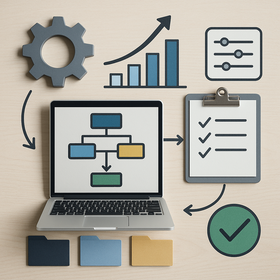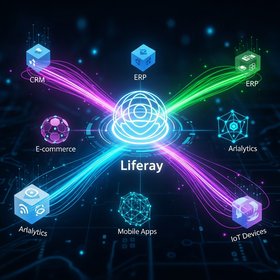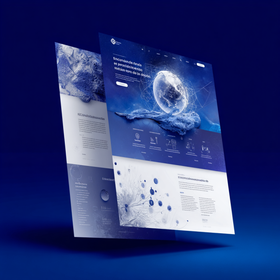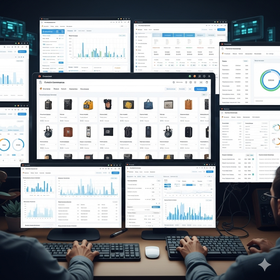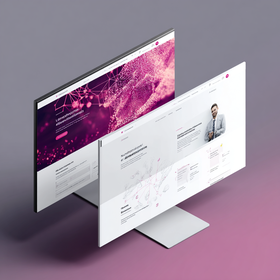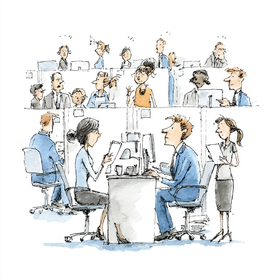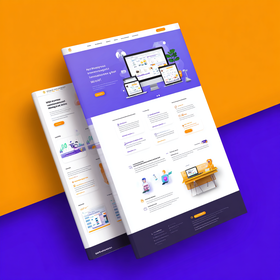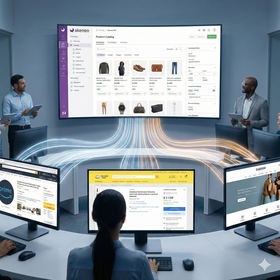D Scaling Tech Teams Fast? Why LATAM and Time & Materials Are the Answer
Por Redacción Aguayo
Speed is everything in tech. But moving fast without breaking your team? That’s the real challenge. The Time & Materials (T&M) model, combined with Latin American talent, is redefining how organizations scale smart and sustainably. 🧩

Why Traditional Models Fall Short
Hiring in-house sounds ideal on paper. You build institutional knowledge. You get cultural alignment. You walk across the office for a standup. But fast-forward a few weeks into the reality of building digital products, and that dream often hits its first wall. Bottlenecks appear. Rigid contracts limit your options. Talent mismatches slow you down. Onboarding takes longer than expected. Suddenly, momentum stalls.
So, you look to external vendors. Fixed-price outsourcing seems like a safe bet—it promises control, clarity, and “predictable outcomes.” But in practice, it often delivers the opposite.
Why? Because product work isn’t predictable.
- Scope is rarely “fixed” when discovery is ongoing
- Teams can’t adapt fast enough when user needs shift mid-sprint
- You end up paying for outputs—not for the collaboration, iteration, or insights that make those outputs effective
It’s like building a bridge in fog with no room to turn.
Enter Time and Materials (T&M): a model built for uncertainty, iteration, and growth. It doesn’t lock you into guesses made three months ago. It lets you adjust course midstream. And when powered by skilled LATAM professionals, that adaptability becomes an asset—not a risk.
The T&M Advantage for Agile Organizations
Agile is not just a methodology—it’s a mindset. One that accepts change as inevitable, even desirable. It embraces iteration, feedback, and continuous learning. But agile teams can’t flourish under fixed-scope, fixed-price constraints.
T&M aligns with how modern product teams truly operate:
- You pay only for the hours that move the work forward
- Real-time collaboration and on-the-fly decision-making are baked in
- Feedback loops don’t just exist—they thrive
- Teams stay focused on outcomes instead of checking boxes
T&M doesn’t mean giving up structure. It means building a structure that breathes.
Agile was never meant to work inside a waterfall contract. T&M gives it the room it needs to do what it was designed for: evolve.
Why LATAM Talent Is a Strategic Fit
Cost efficiency is part of the story—but it’s far from the whole picture. LATAM talent offers something far more powerful: strategic alignment.
- Shared time zones mean real-time conversations, daily standups, and fewer delays
- High English proficiency reduces communication gaps and rewrites
- Cultural similarities make collaboration feel natural, not transactional
- Strong STEM pipelines and vibrant tech communities ensure deep technical skill
And this isn’t just about writing code. LATAM developers are increasingly stepping into leadership roles—running sprints, driving QA, owning architectural decisions. They’re not filling gaps. They’re shaping outcomes.
Collaboration Without Burnout
Let’s be honest: building digital products is intense. It demands speed, precision, and resilience. But trying to work across 10+ time zones, with fractured communication and no overlap, takes a toll—on mental health, on morale, and on quality.
With LATAM teams, you get proximity without the burnout:
- No more 3 a.m. syncs or late-night firefights
- Teams can collaborate during normal working hours
- Everyone works at a sustainable pace—without sacrificing output
The result?
- Better mental health across the board
- Increased ownership and pride in the work
- Lower turnover and higher retention
- A team that’s energized—not just surviving, but thriving
Velocity matters. But long-term health is what sustains momentum.
How T&M with LATAM Teams Unlocks Innovation
Innovation doesn’t unfold according to plan. It doesn't wait for a contract amendment or a three-week approval cycle. It happens when your team has the space to test, learn, and adapt.
Rigid contracts kill that momentum.
T&M enables innovation because it assumes the unknown. It allows:
- Scope to evolve based on discovery, not assumptions
- Budgets to shift based on real results—not initial estimates
- Lean teams to stay focused on impact, not bureaucracy
- Technical leaders to make fast decisions that keep the product moving
Innovation requires trust. T&M grants it—especially when your teams are empowered to act, explore, and build.
From Firefighting to Forecasting
Most teams first turn to T&M reactively. A developer quits. A backlog piles up. A deadline looms. Suddenly, you need extra hands—yesterday.
T&M delivers that. But its true potential lies in proactive strategy.
- Planning a 6-month roadmap with flexibility built in?
- Want to spin up an experimental squad without red tape?
- Need to scale up or down without legal gymnastics?
T&M makes it possible.
- Staffing becomes modular, like building blocks you can rearrange
- Budgeting reflects effort and value—not assumptions
- Teams scale with velocity, not vanity metrics
It’s not just about putting out fires. It’s about avoiding them entirely.
Case Study Highlights
This isn’t theory—it’s already happening.
- A Canadian proptech company launched its MVP in half the time thanks to a LATAM product trio working under T&M
- A U.S. healthcare startup rebuilt its entire onboarding flow in just four sprints with a nimble LATAM team
- A European retailer used LATAM engineers to pilot mobile apps for localized markets—faster and cheaper than their HQ teams could
These aren’t patch jobs. They’re calculated, strategic moves. And they’re delivering real business results.
Debunking Common Myths
Let’s tackle a few objections head-on:
“T&M is more expensive in the long run.”
Only if you build the wrong thing. T&M lets you pivot early—before you burn through budgets chasing sunk costs.
“T&M is chaotic and hard to manage.”
Not if you structure it right. With embedded PMs, sprint rituals, and the right tooling, it can offer more visibility than most fixed-bid setups.
“LATAM teams are junior or low-skill.”
Absolutely not. LATAM is home to senior engineers, seasoned PMs, and UX leaders with experience on global products.
It’s not about geography. It’s about talent—and how you engage with it.
How to Make It Work: Best Practices
T&M works best when it’s intentional. That means:
- Set clear OKRs and KPIs for each sprint
- Embed a product owner or PM—don’t outsource context
- Build cross-functional pods—not isolated freelancers
- Use modern collaboration tools: Figma, Notion, Jira, Loom, etc.
- Keep async comms concise, and check-ins regular
T&M is not an excuse for chaos. It’s a system built to absorb change—without breaking momentum.
Conclusion: Team Design Is Strategic, Not Operational
Scaling a tech team is no longer just a resourcing decision—it’s a design decision. The architecture of your team reflects your organization’s agility, adaptability, and vision. In this sense, the combination of LATAM talent and the Time & Materials model isn’t just about adding developers—it’s about composing smarter, faster, and more human-centered teams.
T&M empowers you to move with your product, rather than force your product to fit your contract. It lets teams breathe, test, evolve, and refactor without getting caught in the machinery of scope creep or change requests.
Meanwhile, LATAM offers more than cost-efficiency—it offers partnership. Developers in the region are culturally aligned, technically capable, and timezone-synced with North American teams. That’s not a workaround. That’s a superpower.
Together, LATAM + T&M unlock a new frontier in team scalability: one where you can scale fast, build with purpose, and never lose sight of what matters—people, product, and progress.
